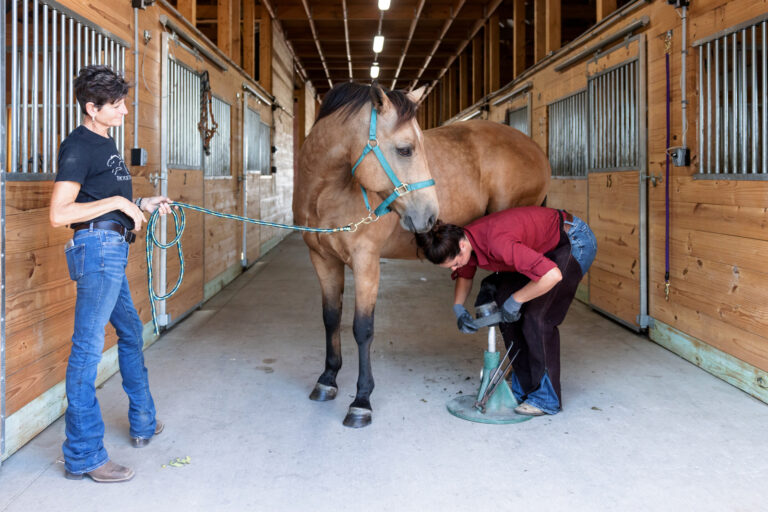
A common complaint about equine practices is poor communication between staff and doctors and/or between the owners/management and employees. Not surprisingly, the bigger the practice, the more likely communication within the team suffers. In some instances, staff and doctors simply don’t feel safe speaking up or suggesting ideas because they are either ignored or become the source of uncomfortable conflict.
Poor Communication in Equine Practice
Poor communication is often characterized by lack of leadership, absence of clear expectations for performance, an inadequate or absent feedback loop, and poor psychological safety. Lack of leadership can manifest as doctors existing as silos with minimal team culture, shared goals, or collaborative problem-solving. Sharing information across the practice team is crucial for preventing misunderstandings, increasing efficiency, and supporting a healthy culture where everyone feels like they matter.
The absence of clear expectations often causes employees to become disengaged, as their motivation to succeed is thwarted by not knowing the definition of success. Lack of feedback frequently co-exists with unclear expectations, with leaders rarely asking for the team’s insights and giving only occasional attention to individual employees’ contributions. Unable to trust that leaders will receive their thoughts with consideration rather than defensiveness or animosity, staff members typically stop communicating important information that could improve the practice.
Four Quadrants in Communication
In her book “Radical Candor,” Kim Scott suggests when a person demonstrates clear caring about another person’s well-being, they can communicate even difficult feedback with truth and authenticity. According to Scott, “You strengthen your relationships by learning the best ways to get, give, and encourage guidance. When you fail to give people the guidance they need to succeed in their work or put people into roles they don’t want or aren’t well-suited for, or push people to achieve results they feel are unrealistic, you erode trust.”
She describes four possible quadrants in communication, with the “x” axis representing candor and the “y” axis representing caring. In the lower left quadrant with low candor and low caring, a person exhibits behavior she calls “manipulative insincerity.” In the lower right quadrant, with high candor and low caring, the behavior is called “obnoxious aggression.” In the upper left quadrant is high caring and low candor behavior, or “ruinous empathy,” of which Scott says we have all been guilty; we naturally feel that being truthful will hurt a person’s feelings, so we tend toward what seems to be kindness but is not. As Brene Brown says, “Clear is kind.” Being truthful with feedback, even when it is disappointing, is a kindness if we truly care about helping the other person succeed. This is called radical candor, and it represents the upper right quadrant. Radical candor is not unkind, but it is difficult.
Using examples from her early experiences as a manager, Scott shared her difficulty in honestly critiquing an employee she had recruited, which eventually led to her needing to terminate him for poor performance. Because she had not given him truthful feedback prior to his termination, he did not have the tools necessary to correct his performance. She was practicing “ruinous empathy” because of her inability to be candid. This experience was transformative in her communication with her team after her self-awareness of her failure.
Final Thoughts
Building trust in an organization that allows for candid feedback requires psychological safety and truly caring about employees as fellow human beings. Leaders must also seek feedback from their team on their own performance, given with radical candor. It is only through this kind of bidirectional communication that businesses can achieve their highest potential.
Developing abilities in radical candor is not easy, but it is worth continually improving. By prioritizing care and candor within your team, you can increase engagement, performance, and satisfaction in your equine practice.
Related Reading
- How To Have a Conversation About Compensation and Benefits
- Resilience and Boundaries for Equine Veterinarians
- How To Conquer 4 Toxic Team Cultures in Veterinary Practice
Stay in the know! Sign up for EquiManagement’s FREE weekly newsletters to get the latest equine research, disease alerts, and vet practice updates delivered straight to your inbox.




